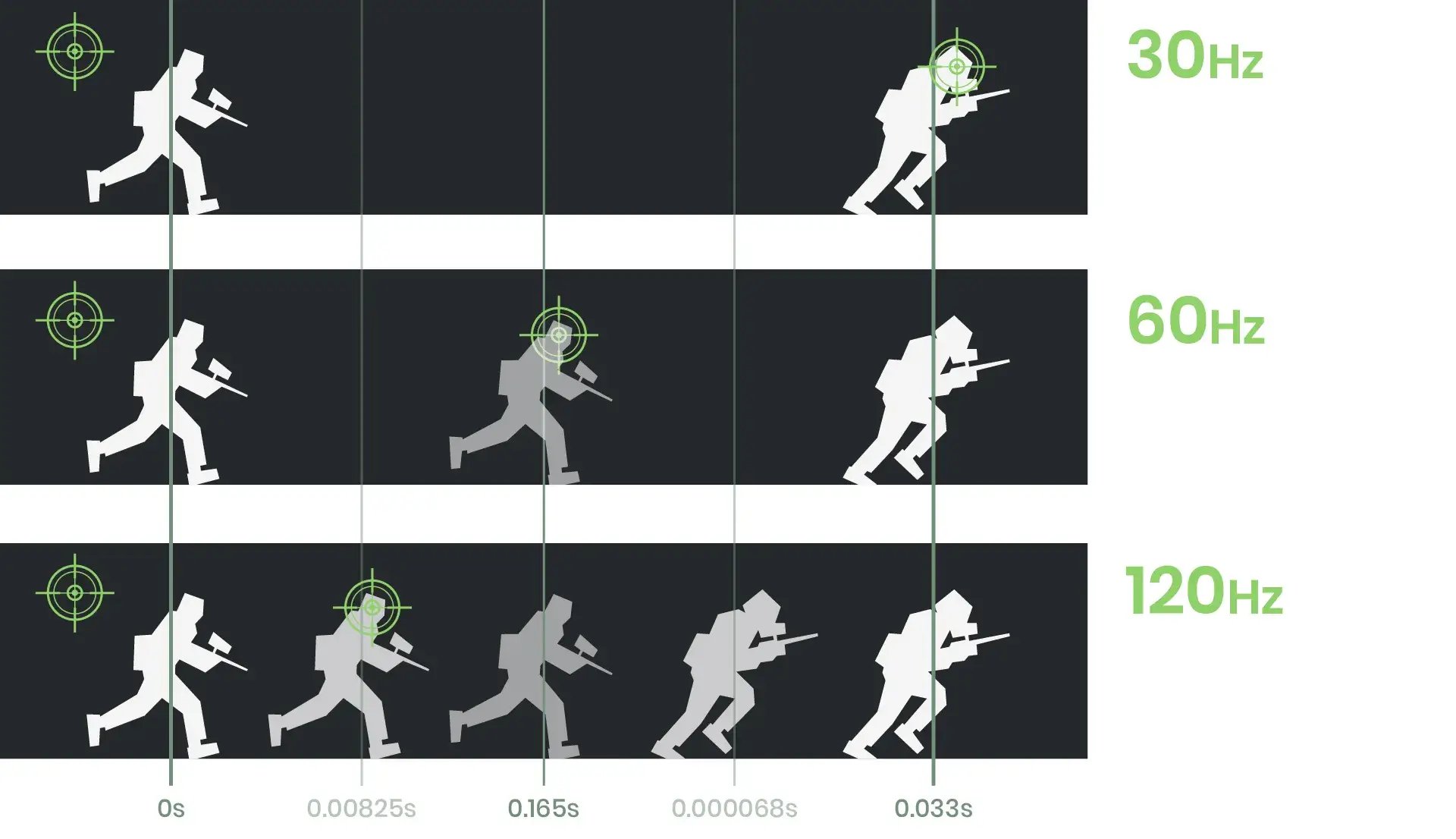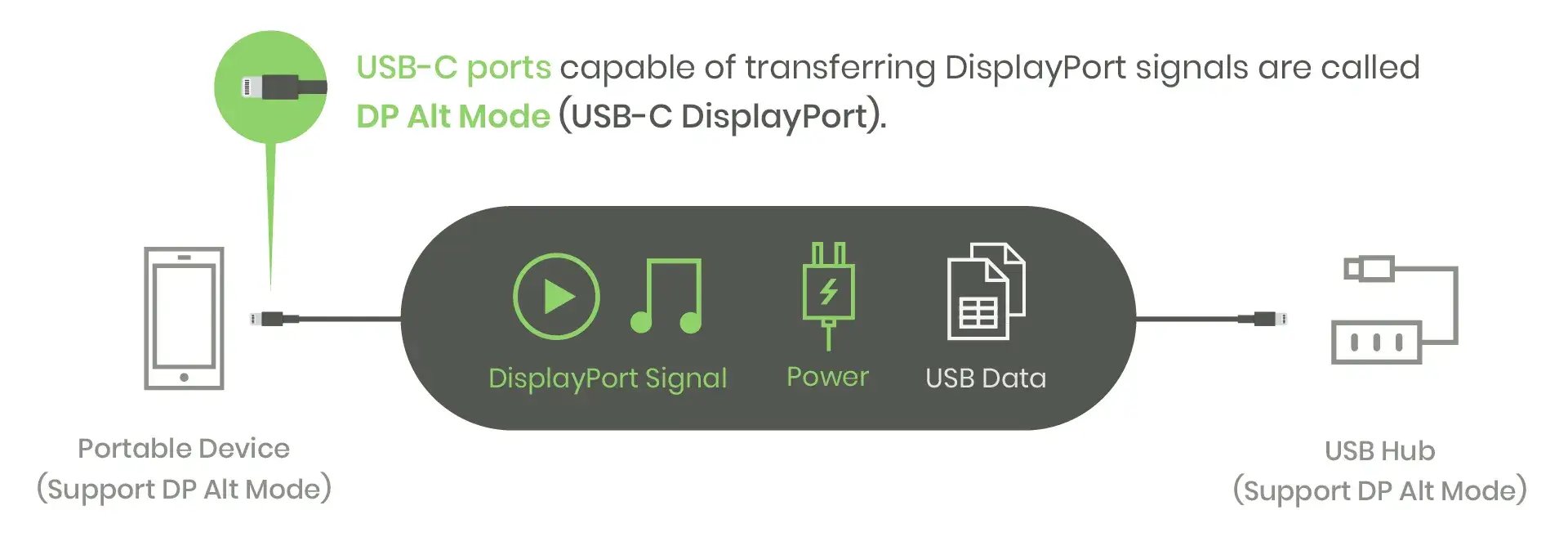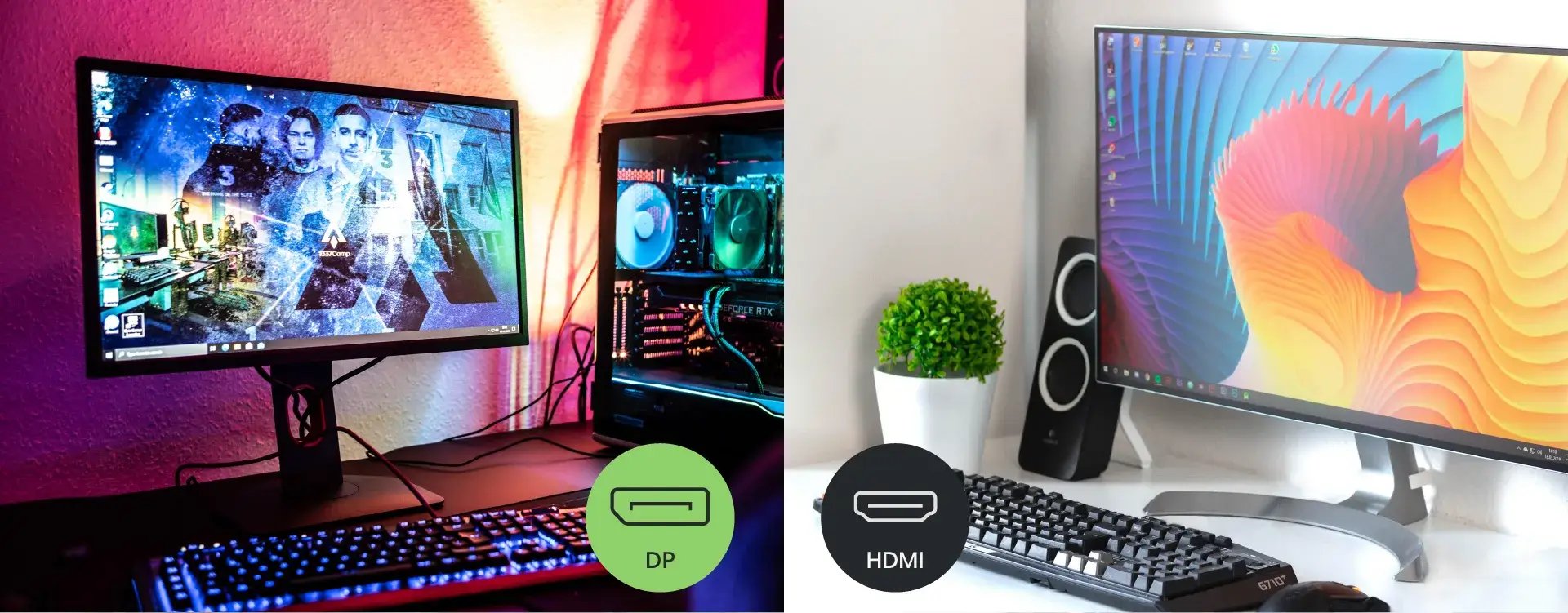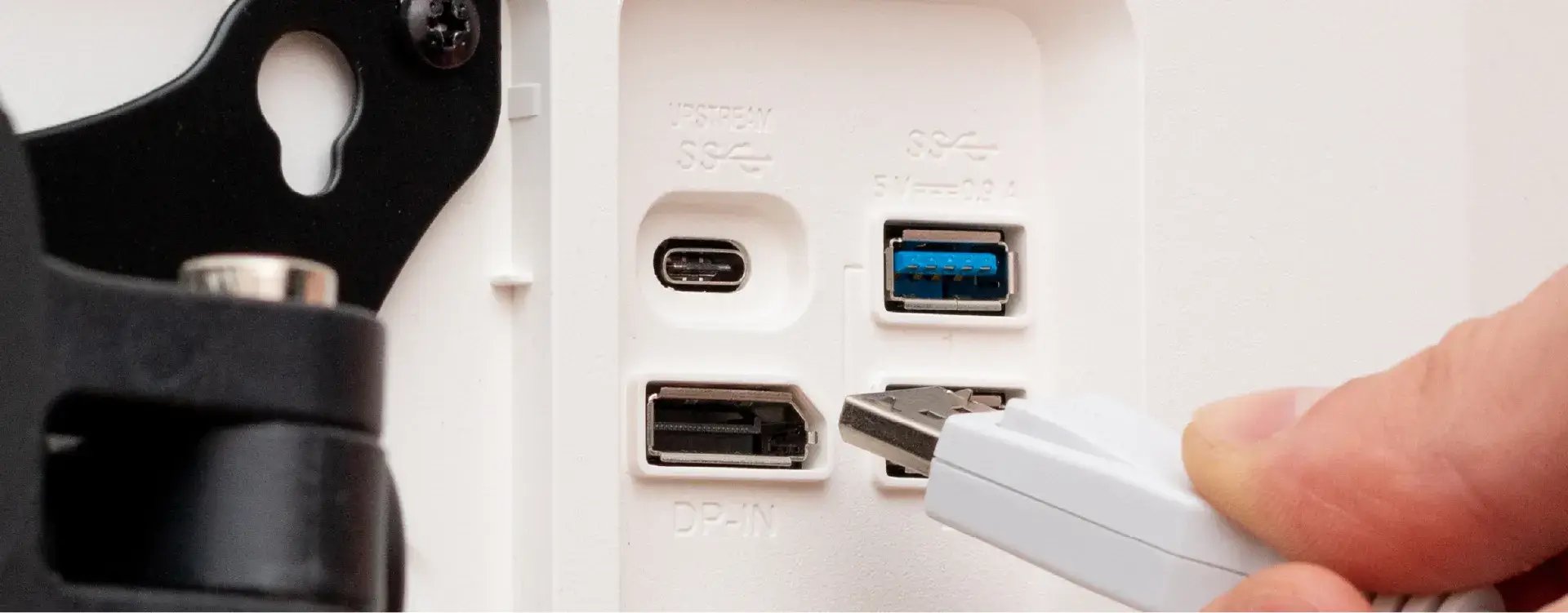
DisplayPort vs. HDMI: Latest Comparison and FAQ
HDMI and DisplayPort are the two most common video interfaces in the A/V industry. While HDMI accounts for a large proportion of the market and is more compatible, DisplayPort also possesses irreplaceable advantages.Mainstream Display Interfaces

A number of AV signals and interfaces are on the professional market. We are familiar with the above 4 kinds of interfaces: HDMI, DisplayPort, VGA, and DVI. In this article, we'll go through the comparison between the most popular HDMI and the one with exceptional audio and visual performance–DisplayPort.

DisplayPort vs. HDMI: Features and Specifications

Open to the Public
DisplayPort, or DP, is a video interface announced by VESA in 2005. Compared to HDMI, DP can be used for design and manufacture without license payment. DP carries audio and visual signals like HDMI, and as it evolves, DP has distinguished itself from HDMI transmission.
Display with a High Refresh Rate
Refresh rate is the number of times per second a display device shows a new image, often expressed by Hz. The higher the refresh rate is, the more pictures will show in one second. With a high refresh rate, human eyes can capture images with more details. Thus, the medical, industrial, or e-sport industries favor displays with a higher refresh rate.


Here we draw a comparison between HDMI 2.1 and DP 2.0, which are close in terms of their resolution. While both support 8K or 4K 144 Hz resolution, a larger bandwidth allows DP to transmit more data. As DisplayPort has a large bandwidth and high refresh rate, it provides exceptional video visuals over HDMI. Despite that HDMI 2.0 has updated its refresh rate in the latest versions, the refresh rate of DP 1.4 is still a great feature.
Multi-Stream Transport (MST) via Daisy Chain Distribution
Usually, HDMI signals are distributed to each monitor via a separate cable connected to the source device, and thus the number of distributing monitors is limited.
DP 1.2 version and above can support a Daisy Chain distribution and transmit signals to multi-outputs without a distributor. As long as the DP monitor supports the daisy chain network, it can be chained to extend and distribute the source to the next monitor. As a result, with a DP cable connected to the source device, the monitors can distribute signals to other monitors.

Single Cable for USB and A/V Transmission - DP Alt Mode
What's the Difference Between DisplayPort and USB Type C
Transmissions between signals like HDMI, DP, and the older DVI and VGA require signal conversion. However, USB Type-C devices that support DP Alt Mode use DP to transmit AV signals. As a result, there is no signal conversion in the transmission of DP over Type-C.
USB Type-C DP Alt Mode
Devices that support USB DP Alt Mode can transmit DP signals via Type-C cables without an adapter. That is, while USB-C supports the transmission of data, control signals, and even power via a single cable, DP Alt Mode can further transmit DP signals. The common use of USB-C brings about more convenience for users.
With the prevalence of laptops and mobile devices, most of which use USB-C as their transmission port, displays have been equipped with USB-C ports for these devices to transmit data directly.

DisplayPort and HDMI on AV Market
Different Product Focus, Different Markets
HDMI can be transmitted via a single HDMI cable and has been widely used for its convenience and prevalence since published. Most A/V products in the current market have an HDMI port, which makes HDMI suitable for households and workplaces. In contrast, with a high refresh rate, DisplayPort is chosen for gaming, medical or industrial fields.

Compatibility and Prevalence
Generally, users have little demand for refresh rates, and HDMI can achieve A/V integration for household use. The immensely growing use of mobile devices, though, provides a potential market for DP. Compared to HDMI, DP Alt Mode is smaller and also supports DP transmission. Shortly, HDMI may no longer be the most popular AV interface.
FAQ about DisplayPort
Is DisplayPort Backward Compatible?
DisplayPort is backward compatible. You can use an older-version DisplayPort cable to connect devices or display cards to a newer version and vice versa. That is, you need not update all the old devices and cables, while you have to adjust the resolution and refresh rate to those supported by the older version.
Why is HDMI to DisplayPort not Working? Can DisplayPort to HDMI Adapters Retain DisplayPort's Features?
DisplayPort and HDMI adapters are used to convert signals, such as our HUE03-4K, which can achieve DisplayPort-in HDMI-out transmission and vice versa. However, HDMI output can only support its original resolution and refresh rate; for instance, conversion between HDMI 2.0 and DisplayPort 1.4 can't support a 4K 120Hz resolution. Also, the DisplayPort daisy chain is limited to DisplayPort cables. Though HDMI to DisplayPort adapters are also easy to buy, and you can also transmit signals from HDMI to mini DisplayPort, remember to check the resolution and their DisplayPort version before purchasing. For instance, mini DisplayPort is developed by Apple Inc. in 2008, but it has not been updated for a long time. It only supports Display 1.2 UHD version with a UHD 3840 x 2160@60Hz resolution as an old version. So pay attention to the specification and DisplayPort version supported by the adapter.
Do All Computer Devices Support DP Alt Mode?
HDMI is still mainstream in the PC monitor market, while more displays and display cards have come to support DisplayPort in these years. Apple Inc. and other mobile phone brands also adopt USB-C to their products, allowing the transmission of DP signals.
Remember to check the version before purchasing a DP monitor, and ensure your USB-C device supports DP Alt Mode.

SC&T DisplayPort Products
DisplayPort 4K@30 Video Extender: DP02E
- Resolution up to 4K@30Hz/1080p@60Hz.
- Transmits signals over CAT5e (and above) with a 70m extension.
DisplayPort 4K@30 KVM Extender: DP02U
- Resolution up to 4K@30Hz/1080p@60Hz.
- Transmits signals over CAT5e (and above) with a 150m extension.
- RX with 4-port USB for KVM and USB flash drives.
- Supports full duplex RS232 transmission.
DisplayPort 4K@60 KVM Extender: DP02U-4K6G
- Resolution up to 4K@60Hz 4:4:4.
- Supports HDCP.
- Extends 4K@60Hz signals for 100m.
- RX with built-in 4-port USB 2.0.
- Supports full duplex RS232 transmission.
DisplayPort/HDMI/USB-C Presentation Switcher: HUE03-4K
- Supports HDMI, DisplayPort, and USB-C A/V signals.
- Resolution up to 4K@30Hz 4:4:4.
- Transmits signals over CAT5e (and above) with a 150m extension.
- USB-C port for DP-ALT Mode and 15W/39W charge.
- Automatic/manual video switching.
4K 60Hz 3x1 HDMI/ USB-C Presentation Switcher: HUS03-4K6G
- Resolution up to 4K60@Hz 4:4:4.
- Supports auto video detecting and switching.
- Supports audio embedding and extraction functions.
- Supports up to 60W PD charging for a connected USB device.
- Supports EDID management.
If you cannot find the above products on our SC&T collection, please contact us and we will provide quote and lead time.

